
EV adoption in Australia has continued to grow, but there’s still a lot that isn’t well understood – or is deliberately misunderstood.
2024 has been an interesting year in the Australian EV landscape, with a number of new models launching and some of the lowest-cost EVs we’ve seen to date hitting the market as well.
It was probably just coincidental that I finally got to review the MG4 Excite 51 right before MG Australia sliced the price down of that precise model to just over $30,000, right?
Still, plenty of buyers have some concerns over what it’s like to buy and use an EV on a daily basis… and only some of them are justified, based on my personal experiences.
The EV picture in Australia is complicated, and it’s not been helped at all by a lot of disinformation that’s out there.
While I would never paint myself as a “Car Guy” – I’m very much your day-to-day functional driver, getting from A to B and all that – I’d long been keen on the EV concept, partly on environmental grounds, and partly, to be honest because I liked the idea of a car that I could top up at home without having to do anything else.
The issue in Australia up until relatively recently however was that the EV revolution was passing us by. This was undeniably not helped at all by rhetoric around how they were going to “ruin the weekend” and the like.
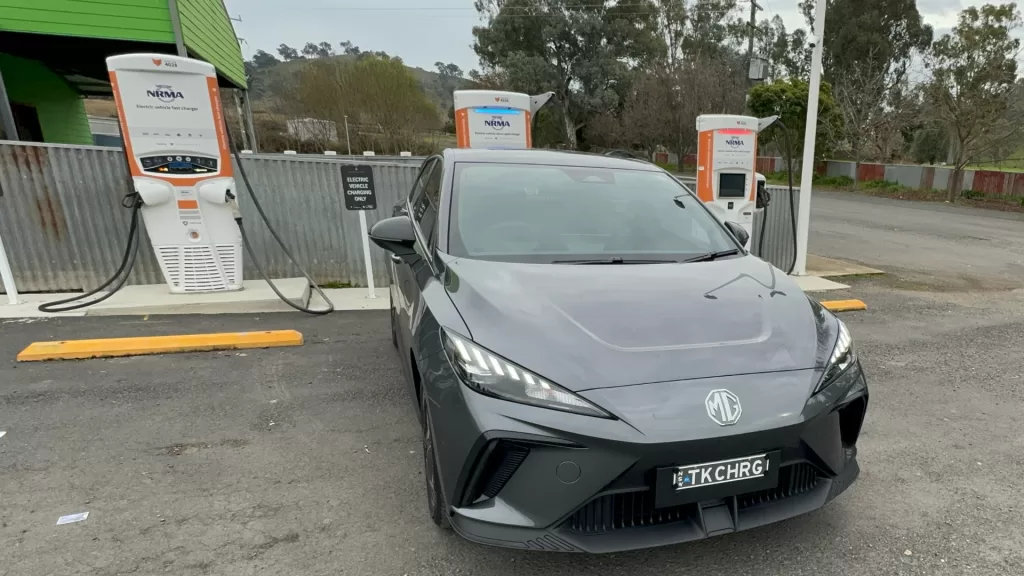
Picture: A weekend, being ruined.
Yes, there are segments of the population that still view them as highly contentious, but back in 2021, I made my first dive into EV ownership, buying second-hand import Nissan Leaf.
It’s a sign of how far we’ve come since 2021 that the company I purchased it from has now pivoted to EV advocacy, because the business model for selling those cars has all but been eliminated by cheaper new EVs from the likes of MG, BYD and GWM.
That first Leaf worked well (and still does!), and though my love for Elon Musk can best be expressed in negative numbers – more bluntly, my personal opinion is that he’s an utter berk – I followed that up when financial circumstances around a particular trade-in made it a bit of a no-brainer to buy a Tesla Model 3.
The Leaf remains the car I drive the most, charged almost exclusively at home (though it recently had its first public Chademo charge in Australia), while the Model 3 is what my partner uses to get to and from work on a daily basis.
That same Model 3 has also seen us through a number of road trips up and down the Eastern seaboard, a few trips to and from Adelaide and around regional NSW as well.
Honestly, I can’t see myself going back to a fuel vehicle or hybrid ever again.
Still, there’s a learning curve, and while Australia is behind that EV learning curve, it has led me to some interesting realisations.
People still don’t really understand EV charging

I think people understand that EVs are electric vehicles – it’s in the name, right? – but they’re still somewhat mystified as to how the electrons get into the car – or at least how they get into the car safely.
For my own purposes, easily more than 95% of my charging takes place from home. In the early days of Leaf ownership, that was from a simple standard power point.
Yes, you can absolutely charge an EV from a standard power point, and for a lot of people and the way and distance they drive each day, that’s more than enough.
It’s one of the big benefits of EVs, because quite literally, if you’re somewhere where there’s power, there’s a way to top up your car. Yes, there’s work to be done on public charging infrastructure – more on that shortly – but a regular power point is a fine first port of call.
It’s why much earlier EV advocates than me were able to do the “big lap” of Australia in EVs years ago before there was any public charging infrastructure at all.

Fun fact: This is the northernmost EV charge I’ve ever done, at John O’ Groats in Scotland.
This point always seems to bring the anti-EV crowd to a near-triumphant scream about charging times, noting that they don’t have the days needed to fully charge an EV to sit around and wait.
They seem to think that it’s all the proof you need that EVs are a bad deal.
They’re not wrong that standard power plug charging (sometimes called “granny charging”) isn’t the fastest way to get an EV charged… but they are wrong in terms of what that means for most people’s actual daily drive.
You know, the things they do every single day, not so much the idea that we’re all doing perpetual big laps around Australia just to get to and from work or the supermarket.
While the stats could be fresher – though there’s not much evidence to suggest that they might radically trend upwards anyway – the ABS estimated back in 2020 that the average distance travelled by a car in Australia is around 12,100km per year, or about 33km a day on average.
Can you get 33km of distance out of a wall socket charging session overnight (when you’re typically asleep)? You sure can, and then some.
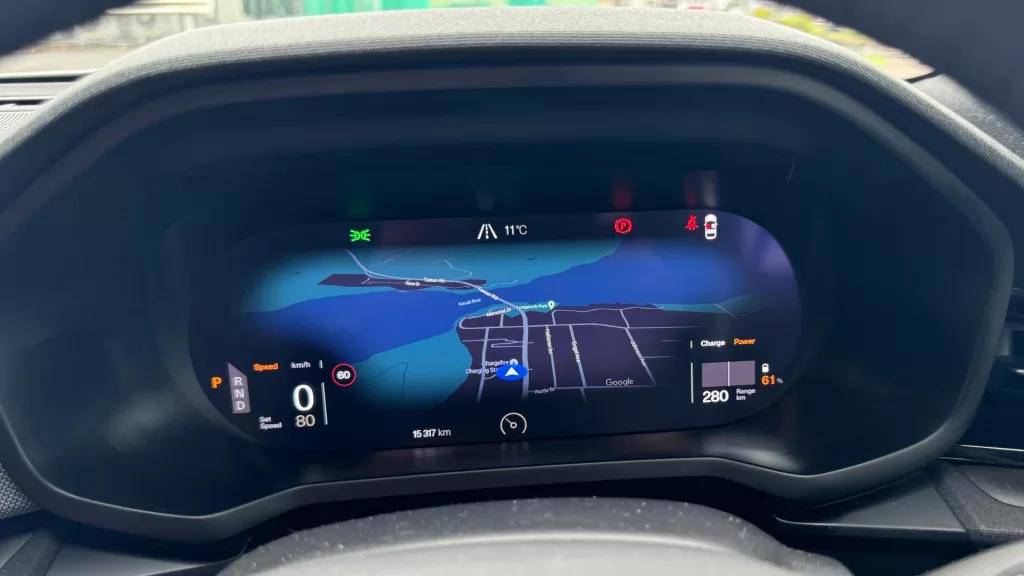
Yes, for some people at-home charging isn’t feasible due to lack of private parking or living in apartment blocks – that’s definitely still an issue – though the quantity of available public chargers has only increased in the past four years for sure, and especially so in metropolitan areas where there’s a lot more of those restricted parking or apartment dwelling Australians.
Personally, to be 100% transparent, I did opt for a faster home charger install because I could, but that was mostly to make juggling the charging of both cars an easier prospect. It’s nothing that couldn’t have been handled from a wall socket in any case.
Range Anxiety is ridiculously overstated

How much range do I have? Who could possibly tell?
Often when I write or shoot a video about EVs, I’ll get a slew of comments and feedback that state rather categorically that EVs are garbage because they can’t do 1,000+km without needing to recharge without stopping.
Which is a really, truly stupid call no matter which way you look at it.
Any driver who states that they make any 1,000km journey without taking a break is someone who, frankly, shouldn’t be on the roads at all.
While I recognise that’s maybe a contentious call in itself, it really shouldn’t be.
Fatigue is a human condition, not a condition that’s relative to the car moving along the road, and anyone who’s going hours and hours and hours on the road without a break is absolutely getting fatigued – and that’s just plain dangerous driving technique right there.
Estimates suggest that 20-30% of all Australian road deaths are directly caused by fatigue, and that it’s considerably more dangerous than driving under the influence of drugs or alcohol.
Does anyone suggest any more that it’s the right thing to do to get behind the wheel when you’re drunk as a skunk?
No, they don’t, so suggesting 1,000km non-stop drives as a “good thing” is even more stupid and dangerous.

Stopping to charge takes time… but that’s also time where you can (and should) take a break.
Taking regular breaks is the way to beat that fatigue trap, and this is generally very easy to do around the schedule where you’ll need to recharge most EVs along most routes.
For most of my longer road trips, I’ll typically do a two hour stint, stop and recharge while having a toilet break and maybe a coffee, then a couple more hours (swapping drivers is also a good idea here), then a lunch break that also covers my EV charging time, lather, rinse, repeat.
Nice and easy, nice and safe – and I get to where I’m going alive and without imperilling the lives of other drivers.

Actual usage from a UK EV road trip. Actual consumption lower because it was FREEZING cold.
Here the rhetoric tends to swing towards the idea that EV drivers are going to run out of power in the middle of nowhere at all, and thus be unable to recharge.
Well… yeah, if you’re driving in a fairly idiotic way.
I’m yet to come across an EV that doesn’t put its power consumption pretty much front and centre of wherever its primary information display is, and that gives you a typically very good idea of how much range you’ve got left in power terms.
If you’re being stupid (or setting up a theoretically viral YouTube video) and you run an EV 100% flat for shits and giggles, then guess what?
It’ll go flat, hurrah, you proved that you’re being stupid. You could burn through all the petrol or diesel in a car and hit the exact same stupid mark.
The reality here is that range estimations on EVs are generally decent at staying accurate. Add to that in-car navigation to EV chargers – something that vehicles like Teslas and Polestars handle in-car – or via the use of apps such as Plugshare or ABRP – and it’s very easy indeed to find chargers and keep on rolling down the road.
Public Chargers: Work still needs to be done
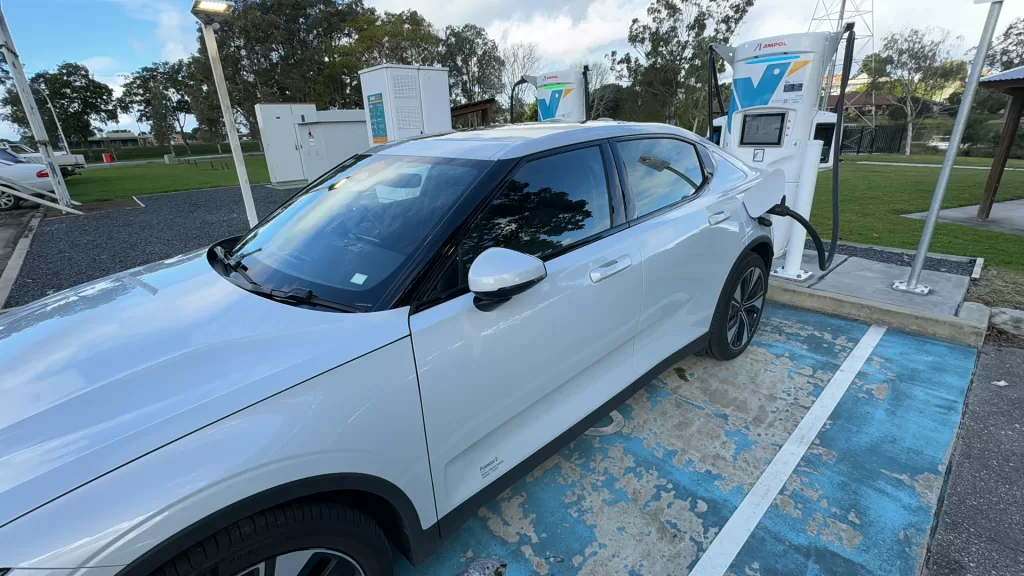
Back in 2021 when I first got my Leaf, I hit an issue early on with charging. The EVSE – that’s the charging cable used for connecting to a wall socket, don’t call it a charger or certain members of the EV community will growl at you – wouldn’t in fact recharge my new-to-me Leaf at all.
Which was an issue, for sure, especially as that was still in the middle of the pandemic. To its credit, the company I purchased it from went over and above to get a replacement working EVSE out to me the very next day, which did rather quell those concerns. At the time, we all had bigger concerns, I feel… but I digress.
Not having my at-home charging options, I did cast around to see what my public charging options were within my suburb, because at the time I wasn’t legally allowed to travel outside it.
Put simply, there weren’t any.
If that problem were to happen today, I could get to at least eight public chargers within range to top up my car, and of course I’m not limited in my travel options either.

A Chademo charger, charging. Though these are becoming less common, and not without reason.
I mentioned earlier that my Leaf only had its first public charging session this week, and that was over in Pittwater mostly out of curiosity as to whether in fact my Chademo port actually worked at all, because I’d never used it.
Spoiler: Yep, works just fine, and there were chargers available, though Chademo is pretty obviously a charging connection style that’s limited in scope compared to the far more widely CCS2 standard.
For the longer trips I’d be taking the Model 3 anyway and within the range of home and Pittwater Plugshare gives up and just tells me there’s “99+” charging options.
More than a few, in other words, but then I do live in Australia’s biggest city by population.

More chargers in the style of this setup (which is in the UK, the snow/silt on the car gives it away) wouldn’t go astray. At all.
Regionally, there is still work to be done, and this is why when I do make my longer road trips, I do a little preparation work, coming up with plans for charging stops that allow for either busy chargers, non-functional chargers or any other kind of issue that might crop up.
I drive and charge relatively conservatively in this respect, and accept that this does sometimes add a little time to my trips. I’m good with that, everyone else can drive as they see fit.
Still, I have hit issues over that timespan, from non-functional chargers, to chargers that would only give slower charges or simply stop working after a few minutes of full speed charging.
Sometimes that’s a matter of calling up the relevant network and getting them to remotely reset the connection. Sometimes it’s a matter of unplugging, waiting a few seconds and then trying again.
Sometimes it’s a matter of coming up with an alternative route, which has led me to some truly lovely discoveries along the way, like this one:
I went through Nhill because I drive an EV. It was well worth it.
Are we at the point where there’s enough EV chargers for everyone, and they’re in every small town the way they generally are for petrol stations?
No, we’re not, and while I appreciate that this isn’t a simple process having spoken to several of the big network providers over time, it can be galling, especially for some routes where there’s only a single public-facing charger to use.
EV Drivers: The Good, The Bad and The VERY Ugly
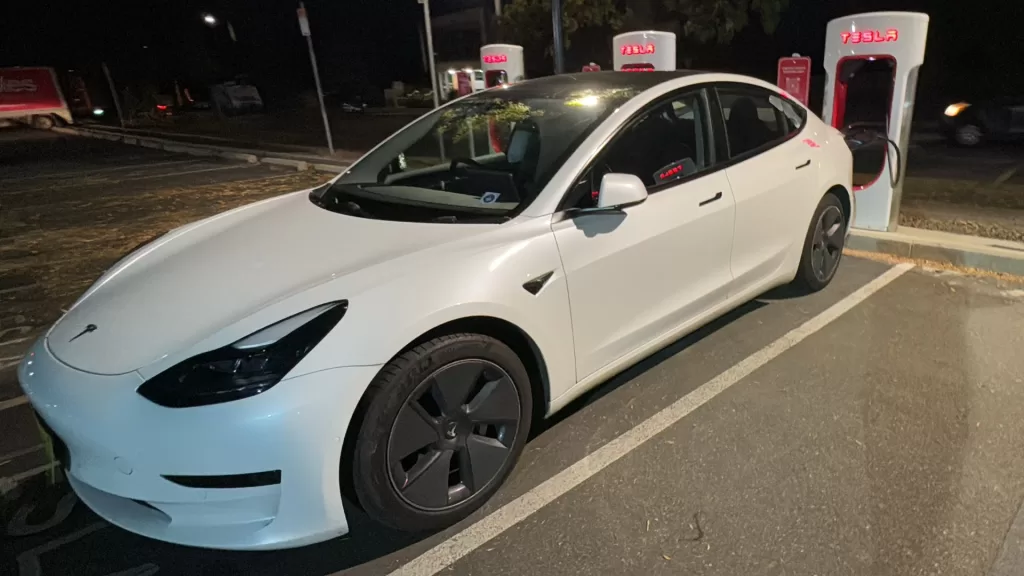
When I first started driving an EV, I had a lot of questions, and I was grateful that there were (and are) online communities that offered me helpful tips and advice.
I’ve tried to pay that forward over that four year span offering advice and help to other EV drivers. Over that time I’ve advised folks to get RFID cards (good for simpler cross-network charging), helped them get EV charging started (even on car models I’ve never personally driven) and given advice on chargers I’ve already used on routes they were headed along.
Being good to people is generally a good thing. Try it today!
But there’s also a stereotype of EV drivers being jerks too. I can’t say that I’ve never hit that before, because I have, though I suspect the reason it’s a stereotype is because EV ownership still stands out, and people probably remember that it was an unusual car that cut them off, or whatever their offense was. EV drivers can absolutely be jerks behind the wheel the same as any other driver.
However, I’ve also hit this within the scope of using EV charging infrastructure too.
I’ve had dual-bay EV chargers blocked by a single car that decided to lazily park diagonally across both spaces before wandering off. Don’t do that, it’s a jerk move.
I’ve had vehicles left on chargers that were at 100% when I turned up, still plugged in with their drivers nowhere to be seen for at least 15 minutes – and probably longer than that. That’s also poor form, not that they seemed to care. Again, some people are just like that. Sigh.
I’ve even had somebody try to “reserve” an EV charger via Plugshare by “checking in” to it before they actually got there, in order to show it as busy when it wasn’t. How did I know that? Because I was charging at the time at the other available point there and wondered why both were showing as occupied! Again, that’s selfish behaviour that shouldn’t be encouraged.
The thing here is that this isn’t an EV problem, it’s a person problem. There’s an old-school computer support acronym called PEBKAC, used to designate user error. PEBKAC stands for ‘Problem Exists Between Keyboard And Chair’).
Maybe we need PEBSWAS – Problem Exists Between Steering Wheel And Seat?
EV Fires: A Hot Topic

Pictured: An EV, not being on fire. As they tend not to be.
I recently had some friends of mine I was visiting comment that they were concerned about my return trip from their place. Not because of public charging, but because they didn’t want me to burn to death.
Now, it’s true, I don’t want to burn to death either (who does?), but the reality here for EV users is that this is another rather ridiculous anti-EV talking point.
In fact, the stats are remarkably clear here, with just six reported EV fires out of something like 180,000 sold battery electric vehicles in Australia.
Oh yeah, and half of those six were from fires started elsewhere and one was from a case of arson, so we’re down to two EV fires, one from a collision and one from road damage.
Not good of course – no fire is, and there are issues with how you handle an EV fire that shouldn’t be ignored. Two is still a risk, but how does that compare against the risk of using a regular petrol or diesel powered car?

You don’t have to keep an EV at minus nine degrees (as this one was at the time) to decrease the risk of fire. The risk of fire is.. not much of a risk at all.
Comparatively, and just in New South Wales alone in 2022-2023 there were 2,803 internal combustion vehicle fires.
Globally in the 14 years between 2010 and 2024 there have been a reported 511 EV fires across the planet.
That’s for a fourteen year period globally, compared to 5.4 times as many in just one year in just one Australian state. Or if we just want Australian stats for some reason, 1,401.5 times as many.
Puts it rather in perspective, no?
Not everything EV-related is going to be cheaper (once you’ve bought it)

While EV pricing has tumbled down as just about everyone predicted, EV ownership is still often pitched as something where you spend a little more on the vehicle but make massive savings on everything else to do with your EV.
It ain’t necessarily so, folks, though it does depend on circumstances.
Let’s talk charging and the running cost of an EV. If you mostly charge from home, yes, it absolutely can be cheaper than running a fuel vehicle, and especially so if you’ve got solar panels at home.
Home charging costs even without solar can shave hundreds or possibly thousands (depending on your driving needs) off a fuel bill.
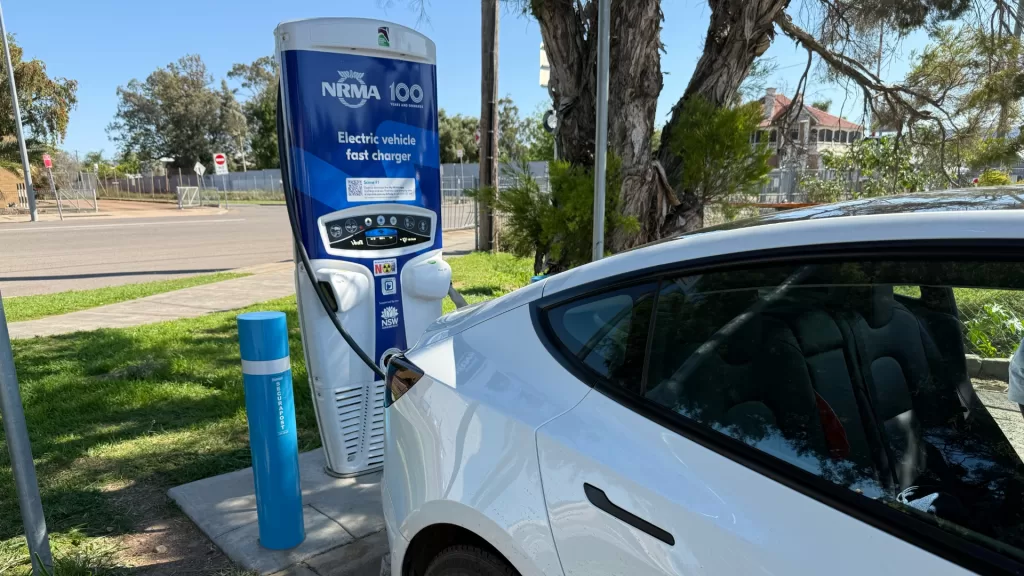
The days of free NRMA EV charging… are over. I’m fine with that.
That can also be true for public charging, though costs vary and have crept up in recent years. I’ve seen a lot of hand-wringing about the cost of public power versus at-home, and I do feel like some of it is just entitled whinging.
The provision of public charging infrastructure isn’t something that magically happens, and the nature of that much faster charging brings with it some serious operational costs that need to be recouped if public charging infrastructure is to be a viable business.
Or to put it a simpler way, nobody expects the cup of coffee that you buy from a coffee shop to cost the same as a cup you make yourself at home. You’re paying for the overheads and provision of service there – and the same is true for public charging.
Still, if there was one thing I could wish for with public EV chargers, it’s that they had the same kind of signage that you see for public service stations, advertising charging prices.
Tesla doesn’t do it, the NRMA chargers I’ve used don’t do it, and it’s a bit mixed as to whether a Chargefox “branded” charger will.

Bright red numbers… but the price being paid isn’t one of them. Bah.
Chargefox is a billing rather than infrastructure company these days in any case, but it would be handy to know pricing upfront for those places where there’s charger choice. Yes, I can to an extent use apps like Plugshare for this, but its data isn’t always up to date or accurate.
Actually getting your EV serviced can definitely be cheaper, and that’s pretty much a direct function of the fact that the engine in an EV is a considerably simpler beast than that in a fuel engine. I can count the number of spark plugs I’ve had to change and the number of timing belts that have split in my EVs on the fingers of no hands precisely.
The pricier side here is more likely to be around insurance and actual repairs. Insurance costs for EVs will naturally vary based on your precise situation, but that’s true for any kind of driver insurance.
If you’re an 18 year old male you pay a higher premium no matter what you’re driving compared to a 45 year old, because the statistics show that younger drivers take more risks behind the wheel. More risks equates to more accidents, and that costs insurance companies money, so they charge accordingly.
However, insurance companies don’t only consider risk when deciding on how much your premiums are going to be.
They also consider repair costs, and here is where it can get messy. A lot of repair costs are predicated on the availability of parts, and with (comparatively) fewer EVs on the road, there’s both less call for new parts, and far fewer “junked” EVs to get replacement parts from that way.
This means that parts are at a premium, and this means repair costs can be higher if you do get involved in a more serious accident.
All of this leads to higher premiums, or a more likely scenario where some EV models if they’re even more obscure being written off because they can’t as easily be repaired at all – which again puts pressure on insurance premiums.
So what do you do if you want a cheaper EV insurance plan?
I’m not going to advocate for any one provider, though I’ve seen plenty of EV advocates state that they got a great deal through one or another insurer.
The reality of insurance premiums is that they’re totally contextual; it’s not just if you’re 18 or 45, but also your gender, where you drive, how much you drive and where you leave the car, all of which can lead to wildly different calculated premiums.
The way to win this game – if you can – is to shop around as wide as you can. Use online forms to get quotes (they’re typically cheaper but also a faster way to get quotes) but jump on the phone if you have to, and complain if they offer you a higher premium as a result, especially (and I’ve seen this happen) if they will insure your EV but don’t have it as a selection in their online forms.
Often (but I make no guarantee) they will be able to match their online price even if it’s stated as an “online-only” price, because at the end of the day they’d rather have you as a customer making money for them than not.
Was this useful to you? Support independent media by dropping a dollar or two in the tip jar below!






Very interesting article. The battery fire hazard statistics compared with petrol and diesel car fires really put it into perspective.
Glad you enjoyed it!
I also enjoyed that read
I was hoping to find a bit more info on charging times
I did learn something’s about the home charge and station charge being different
but not by how long
Like after say a 2 hr drive how long does it take to fill it back to the top again
and from near empty to full at home and at a station
I know it depends on the vehicle and battery
Thanks — glad you enjoyed it.
As for charging times, it very much depends on a LOT of variables (battery capacity of car, speed of public charger, even how fast you were driving and ambient temperatures!) , but I’ll try to give it some very rough context.
For a two hour drive if I’m charging at most public chargers you’re probably talking about a 10-20 minute stop typically, but one important aspect here is that you don’t (and shouldn’t) think about it as always wanting to charge to “full”. It’s really about getting to the next charger or your end destination, especially if you can charge there, even if that’s going to be slow charging. The same kind of charging at home, you’re probably talking a few hours — but then for many of us, the car’s sitting at home doing little to nothing anyway, it’s not time you’ll notice if you’re otherwise doing whatever else it is you do at home!
This does take some mental rethinking about how you “refuel” the car, but once you get used to it, you do start to realise how much time you might spend driving to a servo, fuelling, paying, etc.
There’s a few decent guides to charging speeds/times out there; EVSE’s one here is pretty decent as a starter: https://evse.com.au/blog/how-long-does-it-take-to-charge-an-electric-car/